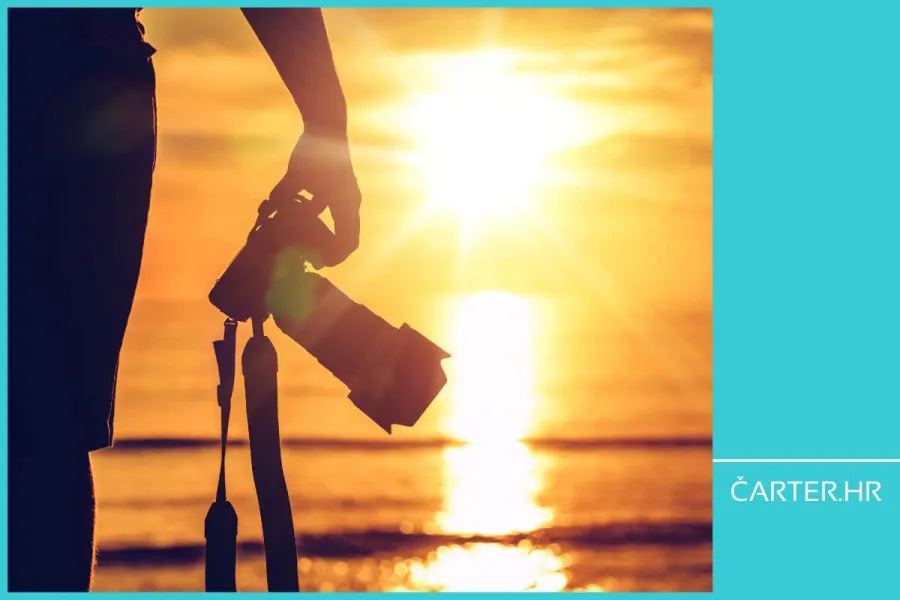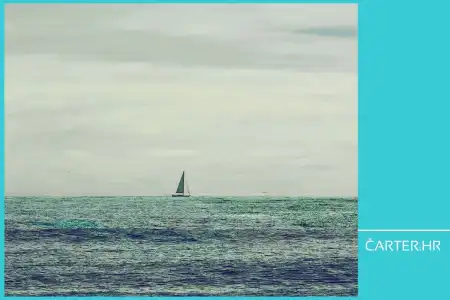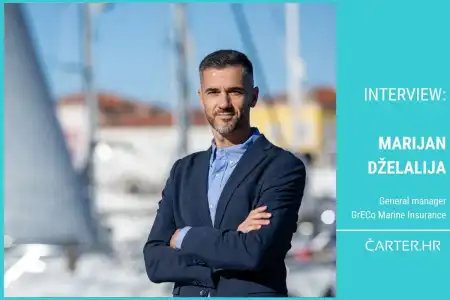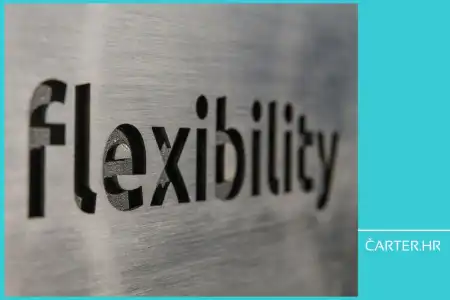
- 23.07.2024.
- News, Technology
If you want to capture attention and convey a message effectively, you’ll probably use pictures, right? Web designers, bloggers, small business owners, digital marketers, content creators – they all use eye-catching visuals as a part for their strategy of business. But what if someone claims you have “stolen” a picture?
With the rise of digital content, there's also been an increase in copyright claims - and not all of them are legitimate.
One of the biggest concerns is false copyright claims.
These false claims are rapidly escalating and maybe even you have encountered them.
The story usually goes like this:
They will have "valid" data and mails titled “Authorization request / Unauthorized image use - Case no: 12345)
They will be “writing to you on behalf of our client XY/AB/FC”. The said client has assigned them to monitor and protect his rights globally.
You are likely using an image without permission (there will be link to your blog, website landing page or something similar)
They will say you are using said image which is protected by copyright law and infringements are actionable under international law.
You will now have “the following options”...
Compensation costs will be 300//500/900€
Or else...
Why are these claims increasing?
The internet is making it easier for the unscrupulous to exploit others.
They send out emails, sometimes very general and sometimes very specific, hoping some recipients will pay up out of fear or ignorance. This practice is called "copyright trolling".

What is copyright and how can you use images “freely”
Copyright is a legal right granted to the creator of an original work, giving them exclusive rights to use and distribute their creation.
This includes everything from books and music to photos and artwork. The importance of copyright lies in protecting creators' intellectual property, ensuring they can control how their work is used and be compensated for it.
Creators’ rights are protected and if you want to use images for your own purposes, you have to obtain certain licenses:
Royalty-free
With a royalty-free license, you pay a one-time fee to use the image multiple times without any additional costs. These images are great for blogs and websites where you need a lot of visuals without recurring expenses.
Platforms like Shutterstock, Adobe Stock, and Canva offer a wide range of royalty-free images suitable for various projects.
Rights-managed
Rights-managed licenses are more specific. You pay based on how and where the image will be used, such as the duration, geographic location, and medium. This type of license is suitable for exclusive or high-profile projects where you need precise control over image use. Getty Images and other premium stock photo sites provide rights-managed images.
Public domain
Public domain images are free to use by anyone for any purpose because their copyright has expired or the creator has waived their rights. Websites like Wikimedia Commons, Unsplash, Pexels, Rawpixel offer a vast collection of free, high-quality visuals.
Creative Commons
Creative Commons licenses allow creators to specify how others can use their work. For example, some may only require attribution, while others may restrict commercial use or modifications. It's perfect for finding images with clear usage rights, ensuring you respect the creator’s terms. This typically involves mentioning the creator's name and providing a link to the license or requires attribution, such as "Photo by John Doe on Unsplash."
Design platforms
Platforms like Canva and Adobe allow you to create your own designs and images. They provide built-in libraries of royalty-free and licensed images, which you can use in your custom designs. By using these platforms, you can ensure that your images are unique and legally compliant.
Legal framework and protections
The EU laws are designed to protect creators' rights and prevent misuse of copyright laws. They serve to help maintain a balance between the rights of creators and the public, ensuring that false claims can be effectively challenged.
If you are falsely accused of copyright infringement, there are several steps you can take to “defend” yourself:
- Request proof - ask the claimant to provide evidence of their copyright ownership and details of the alleged infringement.
- Review your records - check your documentation to confirm that you have the right to use the image. This includes receipts, licenses, and any correspondence related to the image acquisition.
- Report abusive claims - in some cases, you can report false claims to relevant authorities or platforms, which can take action against repeat offenders.
- Consult legal advice - if the claim appears valid or you’re unsure about its legitimacy, seek legal advice. Contact a lawyer who specializes in copyright law to help with the situation. They can provide guidance on how to respond to the claim and protect your rights. For more severe cases, they might help you file a counter-notice or take further legal action if needed.
There are several pieces of legislation and directives on copyright and digital media in Europe:
Directive on Copyright in the Digital Single Market
This directive aims to modernize EU copyright rules, making them fit for the digital age. It includes measures to protect creators' rights online and ensure they receive fair remuneration from platforms that use their work.
InfoSoc Directive
This directive coordinates the laws of member states concerning copyright and related rights in the information society.
Enforcement of intellectual property rights directive
This directive strengthens the enforcement of intellectual property rights across the EU. Measures for gathering evidence, injunctions, and corrective actions.
EU General Data Protection Regulation GDPR
While primarily focused on data protection, GDPR also impacts the processing of personal data for copyright enforcement purposes.

Make sure your images are legal
When using any kind of photographs obviously it’s of utmost importance that you avoid copyright issues if you want to keep your professional and ethical digital presence.
Here’s how can you do it right:
- Use “right” images – use images from verified provides, rely on trusted sources
- Your own photos - the best way to avoid copyright issues. This guarantees you have full control and ownership over the images.
- Stock photo sites - use reputable stock photo websites like Shutterstock, Getty Images, Adobe and Unsplash, that provide a wide range images with clear licensing terms, making it easy to find and use images legally.
- Public domain resources - Wikimedia Commons, Pixabay, and Pexels offer images that are in the public domain or have Creative Commons licenses, meaning they can be used freely or under certain conditions. However, always check the specific terms of use to ensure compliance.
Your obligation is also to read (and understand) licensing terms as some images can come with specific terms of use. Some licenses allow for commercial use, while others restrict it to personal or educational purposes only.

How to respond to false accusations
Now that you have all of this information, you’ll have to know how to respond if you receive a copyright claim.
- The first step is to assess the situation. Don’t panic. You or whoever acquired photographs for your website, social media or blog most probably did not steal the images.
- Carefully read the claim to understand the specifics. Respond but don’t admit fault or make any payments without verifying the claim.
- Gather all necessary documentation to prove your legal use of the image. This includes receipts, licensing agreements, and any correspondence related to image acquisition.
- If you used an image from Canva or Adobe Stock, provide your license details, download confirmation, and any terms of use agreements.
(This is also a moment where you will appreciate maintaining an organized digital documents archive.)
If you are completely sure about the validity of your pictures and that you have received a false claim it is recommended to address the issue and respond to the message received.
Be firm, but polite. Make sure you explain they're in the wrong, you have all the proper licenses (make sure to give proof) and let them know you will not stand to be bothered again with such nonsense.
You may also politely let them know to check their information before sending any allegations and not to bother you again.
But make sure to include sentences like these:
Please be advised that any further unwarranted allegations of copyright infringement against our company will be met with appropriate legal actions to protect our interests. If You must communicate in the future, we expect it to be substantiated with proper verification of facts and relevant licenses. Or else we’ll be forced to take a different approach.
You know you and all other companies, have to comply with copyright laws if you use photographs for marketing or other purposes.
Responsibly managing image use protects you from legal troubles, but also upholds your business's reputation.
Practicing due diligence, such as sourcing images from reputable sites and keeping detailed records of licenses, won't help much with avoiding false accusations.
Until someone puts (a legal) stop to these people.
But you will be prepared to answer and know you have nothing to fear, because you’ll know you did everything right.
For advice or any questions, don’t hesitate to contact us.
Also, sign up to our newsletter and stay in touch with industry news.
Categories of trends
- News
- Sale
- Marketing
- SEO
- Web design
- Social media
- Technology
- Regulations
- Management
- Education
- Finances
- User experience
Newsletter
Sign up for the newsletter and receive the latest trends and tips straight to your inbox



